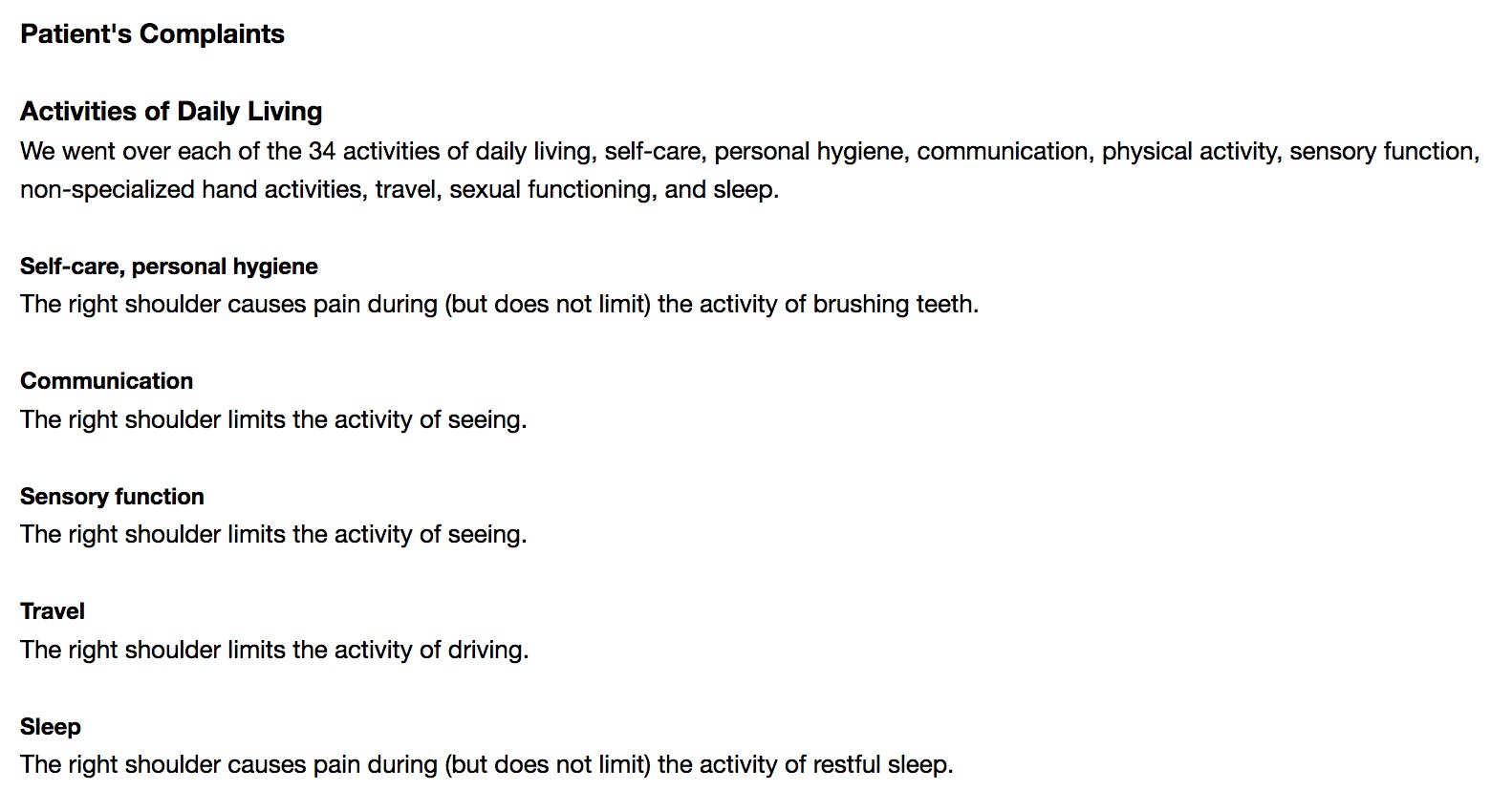This article is part of a series on the top reasons why insurance carriers object to a workers’ compensation report and return it to the medical practice unpaid. This article is intended for medical providers, administrative staff, office managers, as well as insurance claims adjusters.
In our previous post of this series, we discussed the history of symptoms in the doctor’s impairment PR-4 report. The following section covers the next step in the subjective complaints category.
You are facing the possibility that your report could be returned, possibly for the second time, and it is very important to you and your patient that you cross your t’s and dot your i’s so that you make this as timely of a process as possible. Like anything else, taking a few moments to take extra care can save your hours or even days of trouble in the future.
Reason #2: Incomplete Inventory of Activities of Daily Living (ADLs)
All workers’ compensation reports—including impairment PR-4 reports—should include a full update on the injury’s impact of the injured worker’s day-to-day life. These are known as the Activities of Daily Living, or ADLs.
The ADLs are the physical activities done everywhere that is not at work. When an injured worker returns to their job, their tasks are often adjusted for their limitations. Outside of the workplace though, life goes on. The effect that the injury has on the ADLs of the patient are measurable and can indicate the extent of the injury.
Really, the ADLs are the currency of the functional impact of the injury which allows the scoring or sliding of injury to be rated within a range. Your patient has a condition it fits in this range, 5–10% WPI, how do you know? Based off the ADL.
Below are the conditions of the ADLs as expected to be filled out in the impairment report.
- There are 34 ADLs outlined in the AMA Guides 5th Edition. These include routine activities such as brushing teeth and walking.
- The injury’s impact on the ADLs are measured by two dimensions: the endurance and the pace of the activity.
- The endurance is the amount of time that an individual can spend doing a certain activity.
- The pace is the rate or the speed at which the activity can be performed
There are 3 ways that an injury can affect an individual ADL.
- Limitations – The activity is limited by the injury. The pace or endurance is altered or diminished.
- Pain/Symptoms – The individual experiences pain (or other symptoms) when the activity is performed. Pace or endurance are not altered or diminished, although
- No Symptoms – There is no pain, nor is there inhibition to the activity’s pace or endurance.
Just as in our previous topic about the patient’s history of symptoms, the medical provider would list the status of the ADLs in the titled “Subjective Complaints” (which is on the Doctor’s First report and the PR-2 Physician’s Progress report) or the “Patient’s Complaints” section (which is on the impairment PR-4 report).
Naturally, the workers’ comp physician would know that if the section they are filling out mentions to ‘use the reverse side if more space is required’, there is an overwhelming chance that they are going to have to do so.
This is all crucial information that ensures that your report is complete and accurate. A complete report shows that you have asked the patient about each of the ADLs, and ascertained whether the injury impacts any of them.
Understandably, ADLs are important to the injured worker, and just as with getting them back to work, the goal is to get them back to living as well.
See the image below for an example of how RateFast prints a thorough inventory of the ADLs in a workers’ comp report:

